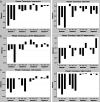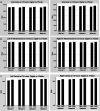Digital models vs plaster models using alginate and alginate substitute materials
- PMID: 20482351
- PMCID: PMC8966457
- DOI: 10.2319/072409-413.1
Digital models vs plaster models using alginate and alginate substitute materials
Abstract
Objective: To compare the dimensional stability of four impression materials over time and to compare OraMetrix digital models vs traditional plaster models.
Materials and methods: Two traditional alginates (Identic and imprEssix) and two alginate substitutes (Alginot FS and Position PentaQuick) were used to take multiple impressions of a maxillary typodont. Fifteen impressions for each material were taken and poured with plaster at three time points: 72 hours, 120 hours, and 1 week. Five impressions for each material were taken and were sent to OrthoProof for digital model reproduction at 72 hours. Digital models were then integrated with OraMetrix software. Plaster and digital models were measured in the anterior-posterior, transverse, and vertical dimensions. The control typodont and plaster models were measured using a digital caliper, and digital models were measured using OraMetrix software.
Results: Statistically significant changes were found for models replicated from Identic impression material in all three dimensions by 72 hours. Statistically significant changes were seen in imprEssix impressions in the vertical and intercanine dimensions. Digital models were significantly smaller in all dimensions compared with plaster models and the control.
Conclusions: Identic impression material showed a statistically and clinically significant change in all dimensions within 72 hours and therefore should not be used if impressions are not going to be poured immediately. Alginate substitutes were dimensionally stable over an extended period. Digital models produced by OraMetrix were not clinically acceptable compared with plaster models.
Figures



References
-
- Han U. K, Vig K. W, Weintraub J. A, Vig P. S, Kowalski C. J. Consistency of orthodontic treatment decisions relative to diagnostic records. Am J Orthod Dentofacial Orthop. 1991;100:212–219. - PubMed
-
- Joffe L. Current products and practices OrthoCADTM: digital models for a digital era. J Orthod. 2004;31:344–347. - PubMed
-
- Mayers M, Firestone A. R, Rashid R, Vig K. W. Comparison of peer assessment rating (PAR) index scores of plaster and computer-based digital models. Am J Orthod Dentofacial Orthop. 2005;128:431–434. - PubMed
-
- Quimby M. L, Vig K. W, Rashid R. G, Firestone A. R. The accuracy and reliability of measurements made on computer-based digital models. Angle Orthod. 2004;74:298–303. - PubMed
-
- Bell A, Ayoub A. F, Siebert P. Assessment of the accuracy of a three-dimensional imaging system for archiving dental study models. J Orthod. 2003;30:219–223. - PubMed
Publication types
MeSH terms
Substances
LinkOut - more resources
Full Text Sources

